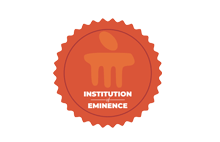Enhanced adsorption: Reviewing the potential of reinforcing polymers and hydrogels with nanomaterials for methylene blue dye removal
Document Type
Article
Publication Title
Surfaces and Interfaces
Abstract
Polluted water containing synthetic dyes from industries of various sectors is a serious hazard to human health as well as the rest of the flora and fauna in the environment. It has to be treated by efficient yet cost-effective methods such as adsorption of the pollutant dyes. This review summarizes the successful adsorption of one such hazardous dye, methylene blue, by using polymeric and hydrogel nanocomposites as efficient adsorbents. These nanocomposites have been proven to be more active in adsorbing than mere parent polymers or pure nanoparticles, as seen in most cases. This effect may be the contribution of the high adsorption capacities as a result of proposed adsorption mechanisms, synergistic enhancement in the desired characters of the nanocomposites from its parent components, and significance of optimum sorption conditions influencing the adsorption of the dye onto the nanocomposite adsorbent. The porous nature of the polymer and the adsorption activity of the nanofillers are the potential cause for this research. Not only is the adsorption of the dye by novel adsorbents remediation for pollution but also has been proven to be a green approach due to the spontaneity of the process of adsorption without consumption of external energy in addition to being recyclable and non-toxic.
DOI
10.1016/j.surfin.2024.104670
Publication Date
8-1-2024
Recommended Citation
Umesh, Aadarsh Srirangapatna; Puttaiahgowda, Yashoda Malgar; and Thottathil, Swathi, "Enhanced adsorption: Reviewing the potential of reinforcing polymers and hydrogels with nanomaterials for methylene blue dye removal" (2024). Open Access archive. 10212.
https://impressions.manipal.edu/open-access-archive/10212


